Shades
Today we will consider ideas that you don’t need to be a professional painter to implement. It is not difficult to paint individual walls in different colors, it is more difficult to make a choice.
Bold and energetic natures can decide on a combination of two rich contrasting shades, just make sure that their temperature matches. Balanced and peace-loving owners will like a combination of discreet pastel tones. In any case, it is better to cover large walls with dark and muted colors, and small areas with light and bright colors.
If you take shades of the same color, there can even be 3-4 of them, and the most saturated tone against the background of paler brothers will reveal its full potential and will look especially juicy.
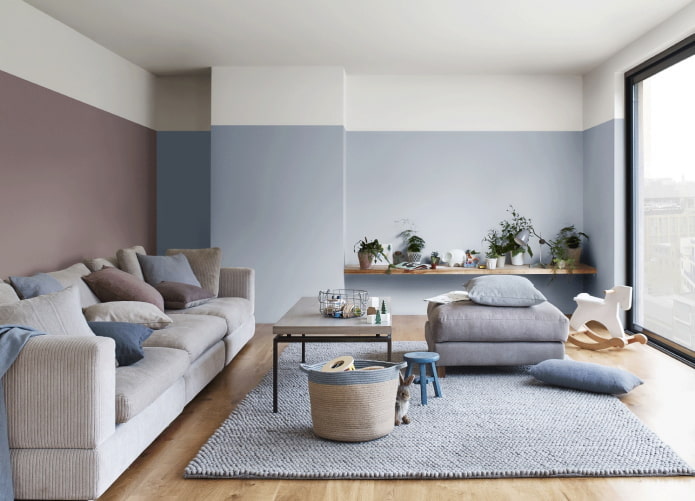

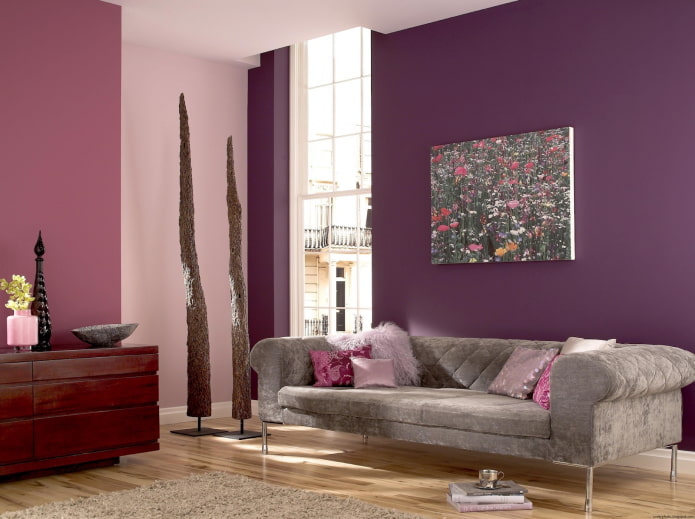
Horizontal
Expressive horizontal stripes visually expand the room, so they should be adopted by owners of “corridor” rooms and placed along the narrow sides. If the wall area ratio is acceptable, but the ceiling is complex and low, for example, in an attic, painting the room from the floor to the middle in a bright tone, and above in a very light or even white will help to level out the disharmony and add space.
The stripes do not necessarily have to be the same width – gradually narrowing towards the ceiling, they visually push it higher.
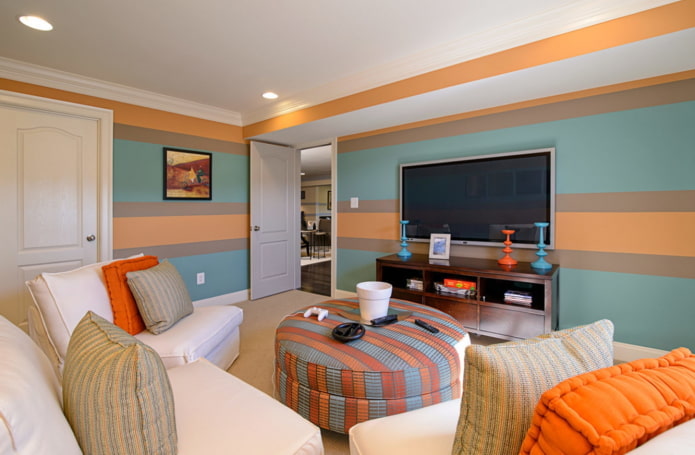
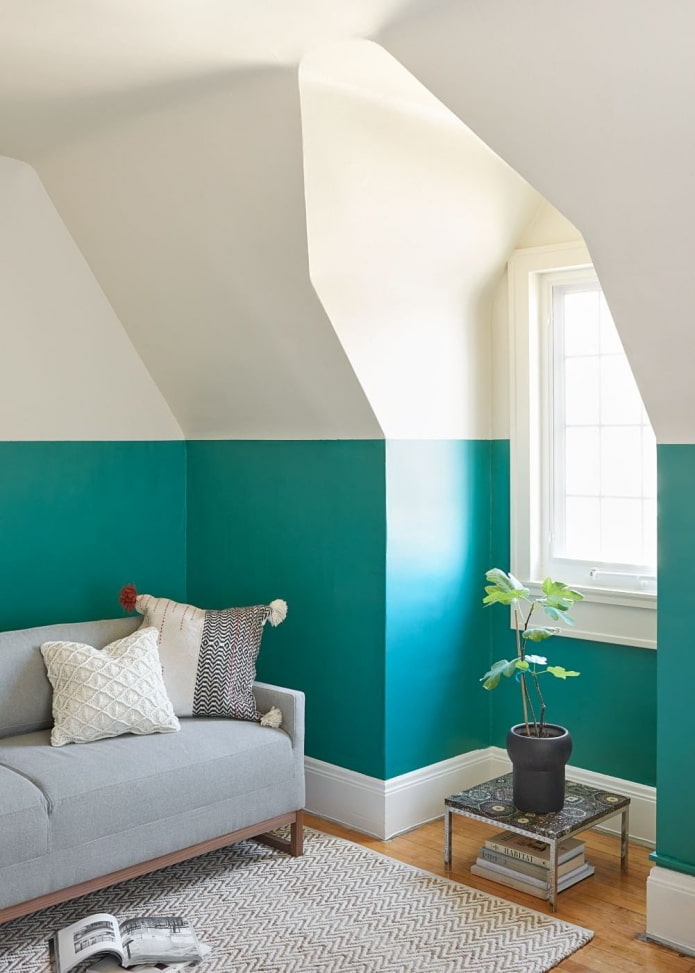

Vertical
When it comes to low ceilings, vertical stripes are more often used. The narrower and lighter they are, the more effectively they act as a jack. Wide stripes of rich, contrasting tones should not be painted on the walls of a tiny room. An exception is an accent striped wall, which will be appropriate even in a cramped kitchen or dining room.
By bringing vertical stripes from the walls to the ceiling, you will get the effect of a cozy niche or color zoning, which works great in small bedrooms when the pattern goes across the headboard.
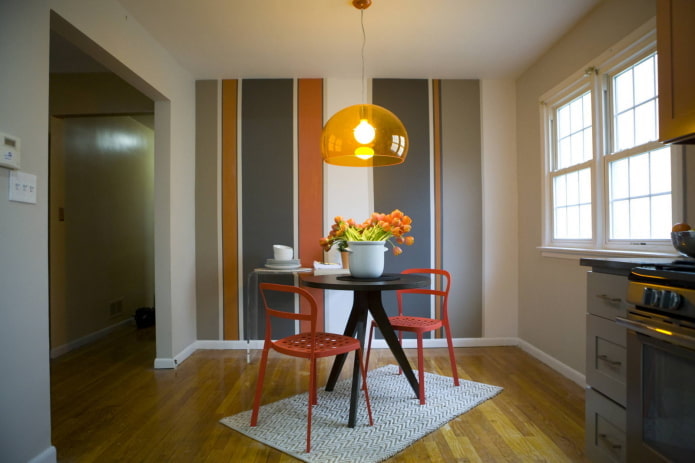
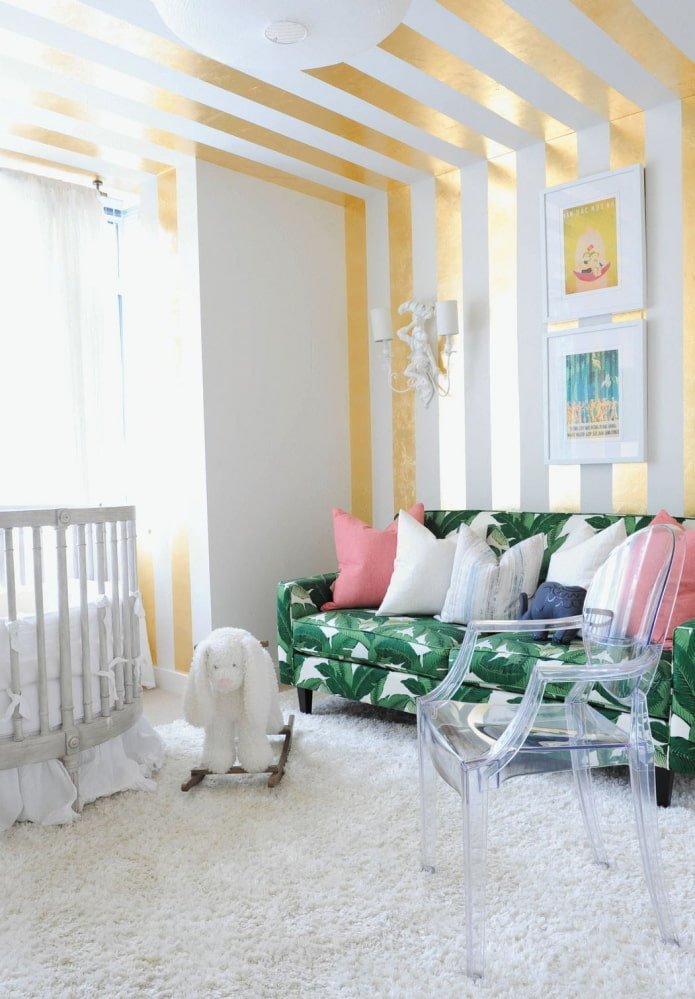
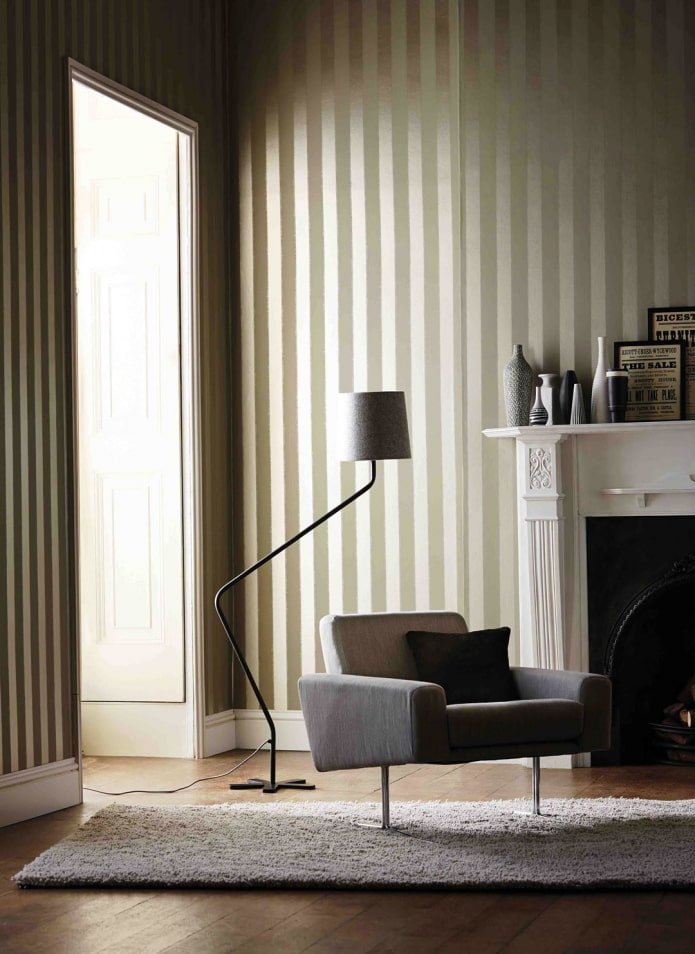
Geometry
Let’s get more complicated and move on to geometric shapes. These can be chaotic arrays of triangles, compositions of ovals and circles, regular honeycombs and Christmas trees – you need to focus on the overall style of the interior. In order for the furniture to look harmonious in such a frame, its shape should match the chosen pattern. Applying it won’t be difficult even for a beginner, if you are careful and use masking tape.
Geometry, especially bold and large, looks better on an accent wall – if you spread the pattern all over the room, you will almost certainly get dazzle in the eyes.
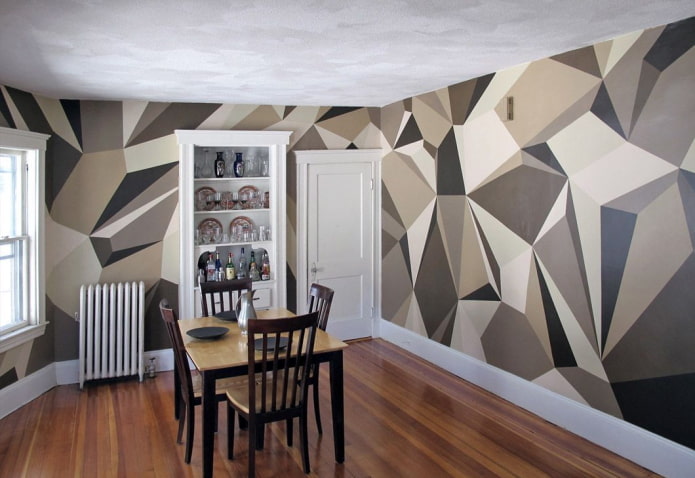


Stencils
Many people have the desire to create, but not everyone has the ability to handle a brush. You can apply an interesting pattern to a plain wall by tracing ready-made plastic templates or rolling silicone stencil rollers.
The simplest option is stencil wallpaper, which is successively attached to the wall, adjusting the pattern, and painted over with a regular roller.
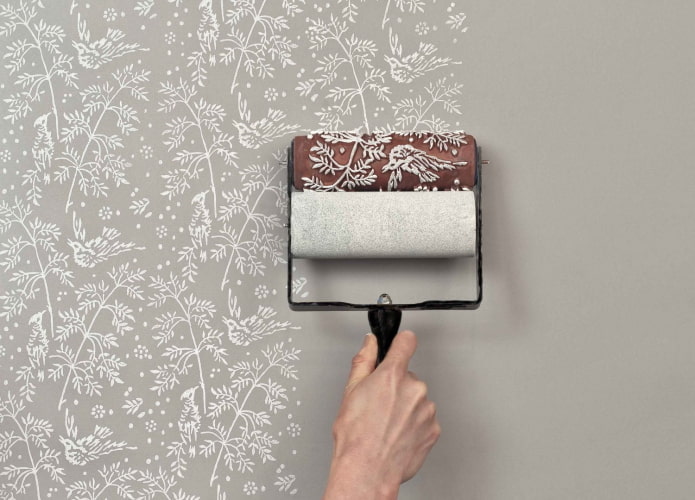

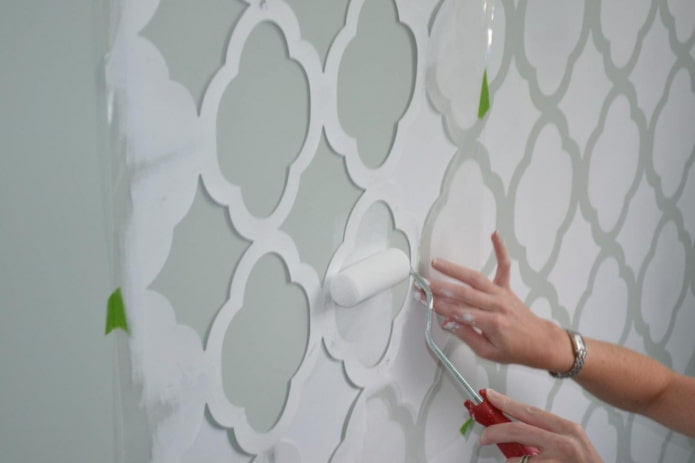
Texture
This technique requires minimal artistic skills and special adhesive paints. The point is to give the wall a unique look using factory or homemade devices. Anything is used: brushes with long, hard bristles, rollers wrapped in bundles or cut up, twisted rags, crumpled newspapers…
By touching the wall with the chosen tool with a certain force and frequency, you will get an interesting texture or even a meaningful pattern – for example, you can depict a semblance of a rose with a crumpled cellophane bag.
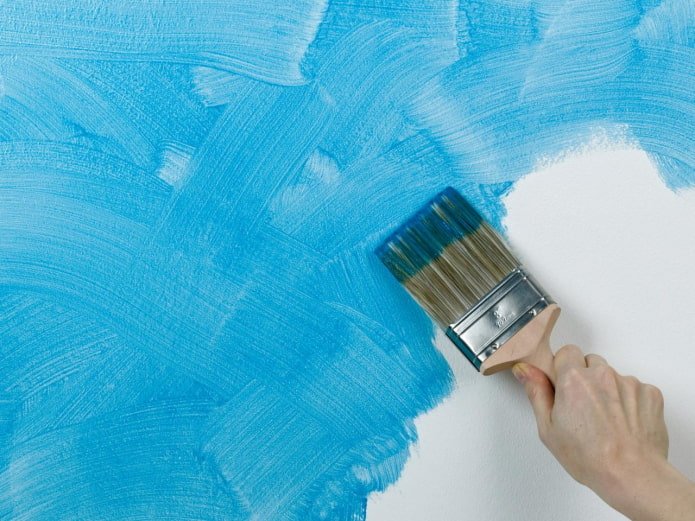
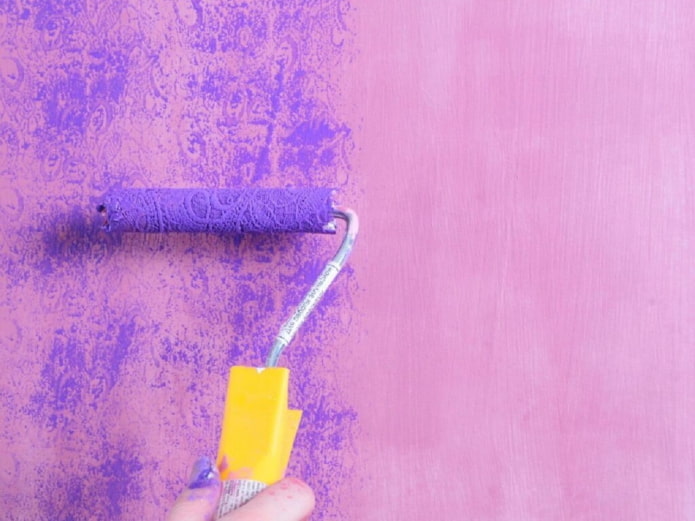
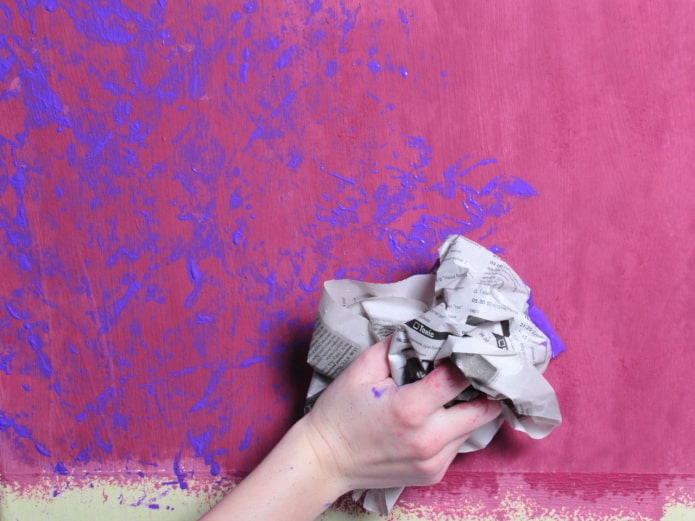
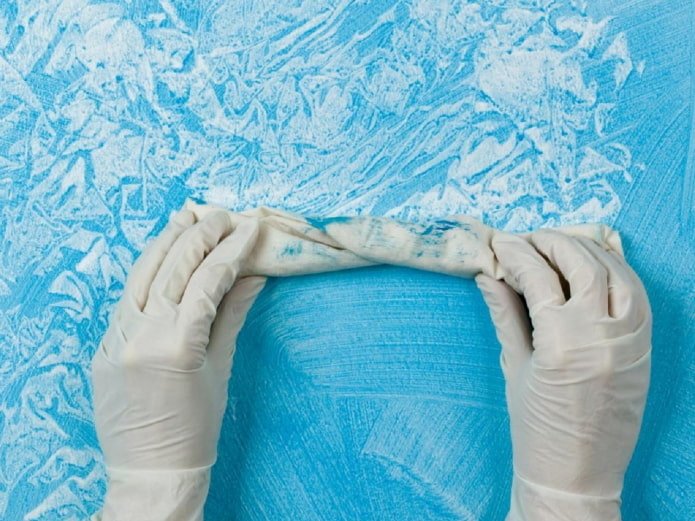
Brick
Textured painting of walls is not available to everyone: sometimes it turns out unevenly, sloppy or just plain ugly. If you’ve had enough of the above methods and haven’t achieved the desired result, take a big sponge and create a real loft chic in the room.
With the help of a sponge soaked in paint, even a child can skillfully cover a wall with fake brickwork. To enhance the resemblance, go over the “seams” with polyurethane foam or cement mortar.

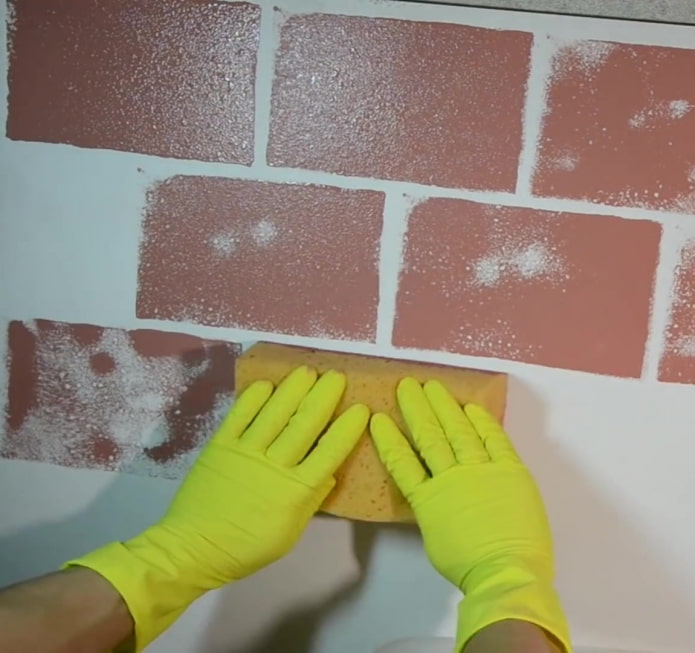
Gradient
The ombre coloring technique is varied – it is a smooth transition from one shade to another, and a gradual lightening of a deep tone, and a cheerful mishmash of several bright colors. The complexity of execution depends on the chosen technique.
Only an experienced master can make an even gradient with a spray gun, and a sloppy ombre with a brush can be done even by a beginner, if he tries.
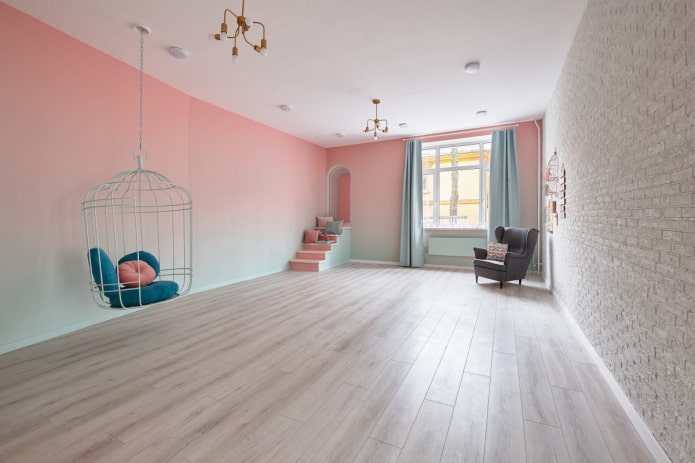
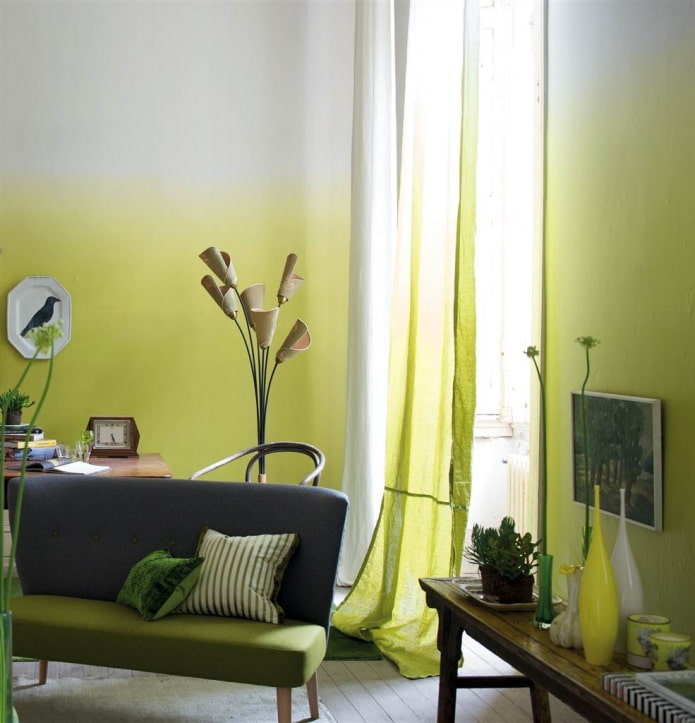
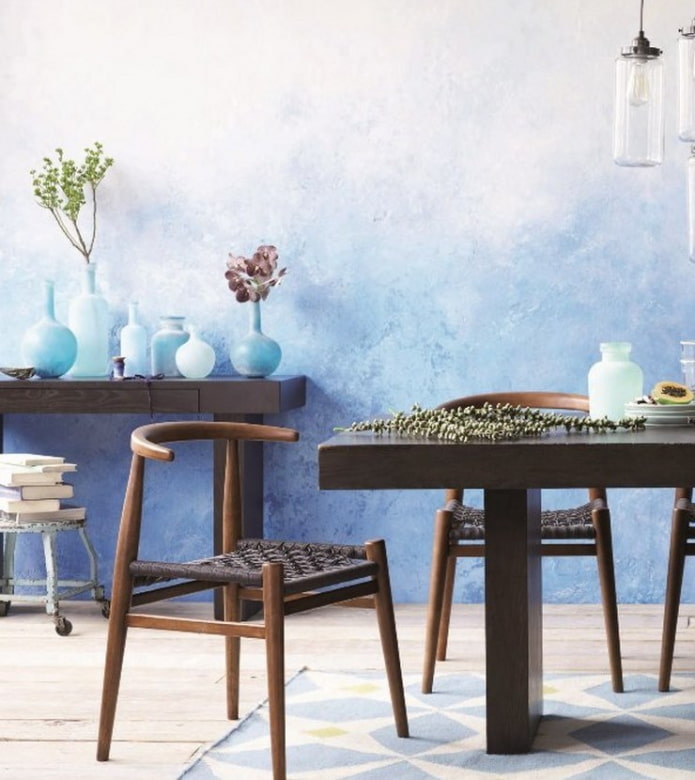
Blots
At first glance, there is nothing easier than splashing paint on the wall or creating watercolor stains with a spray gun. But artistic disorder is also an art, you need to know how to make a beautiful blot. If you have had this talent since childhood, feel free to take on the task, but do not forget to protect surfaces that are not intended for vandalism from paint and water.
Bright streaks and blots are good for accent solutions and walk-through rooms – few people are comfortable looking at such a sketch all day long.
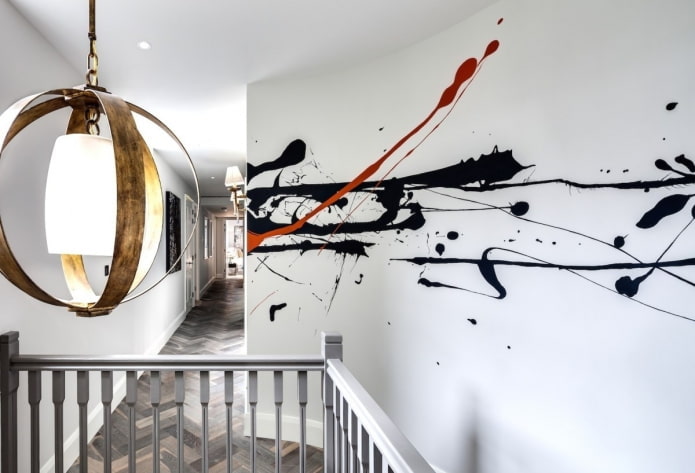
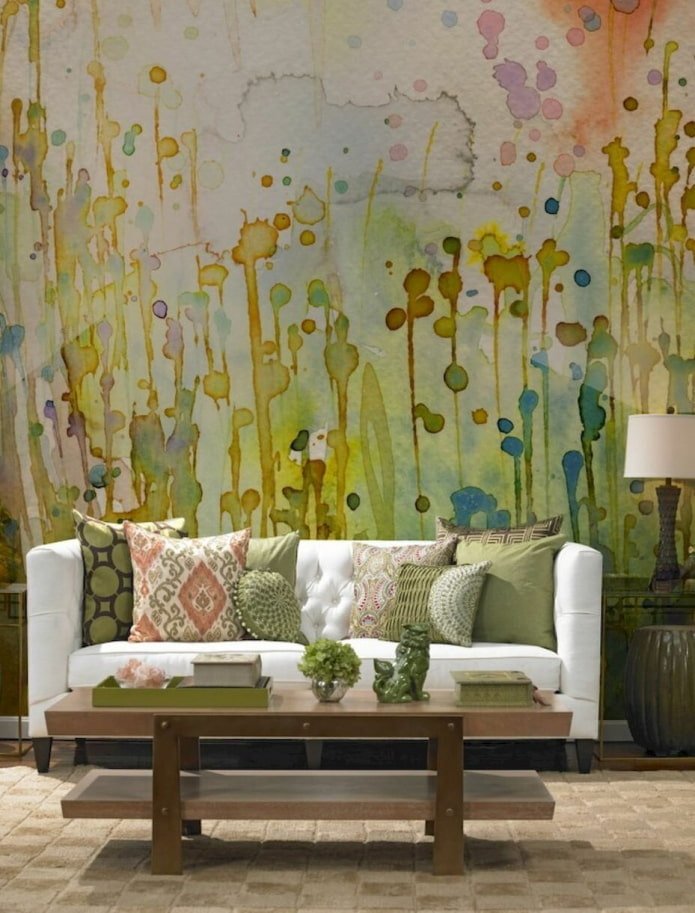
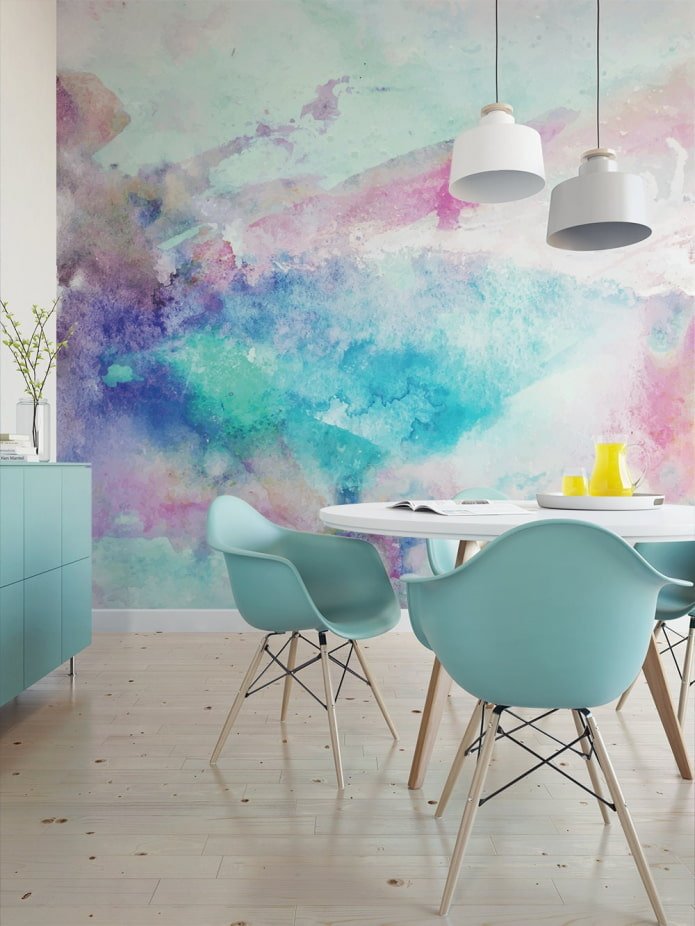
Drips
For those who don’t know how to stain walls aesthetically, we can recommend a simpler technique: fill a syringe with paint and pour it down from a selected height. Careful preliminary surface treatment is not necessary – drips lie more interestingly on an uneven wall. They can be colored or monochrome.
It is easy to make a decorative horizontal or vertical stripe from drips, delimiting it with masking tape.
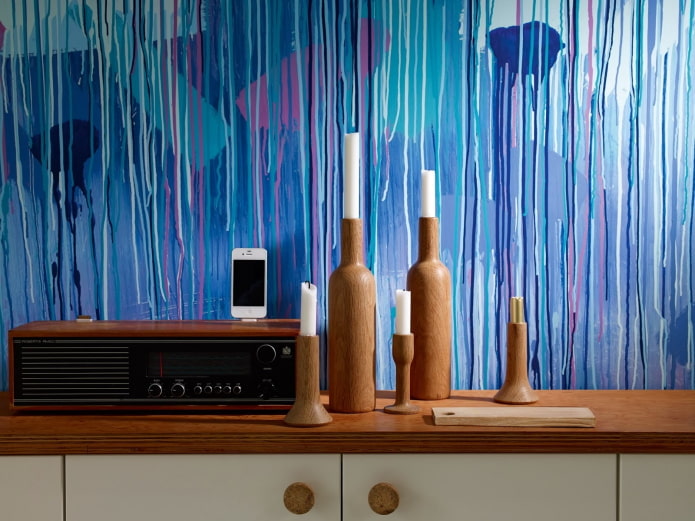
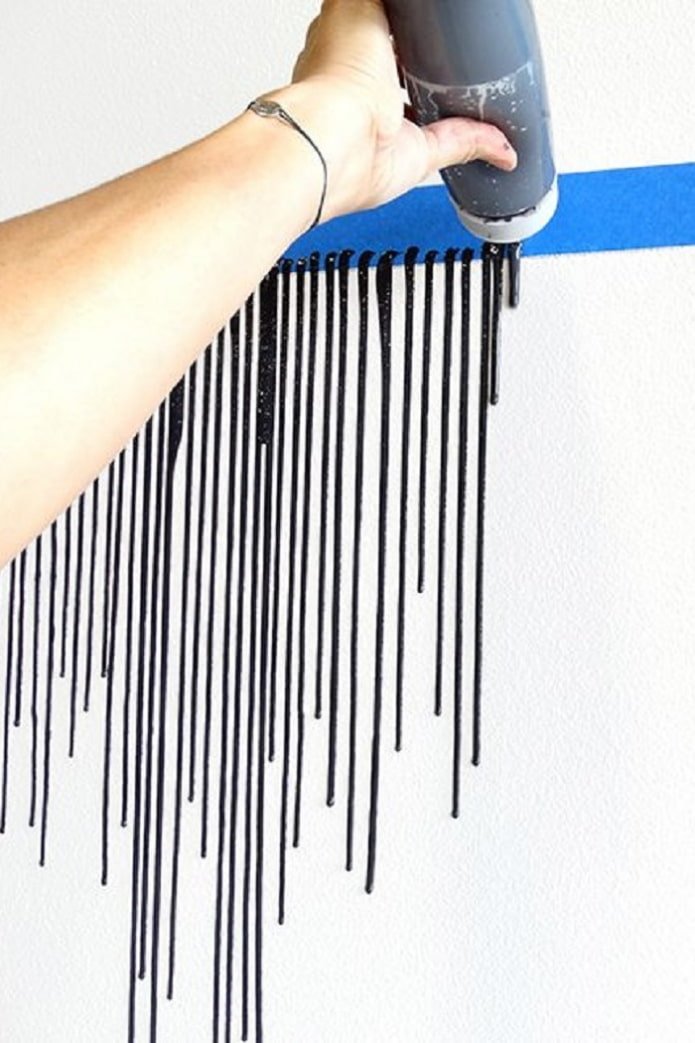
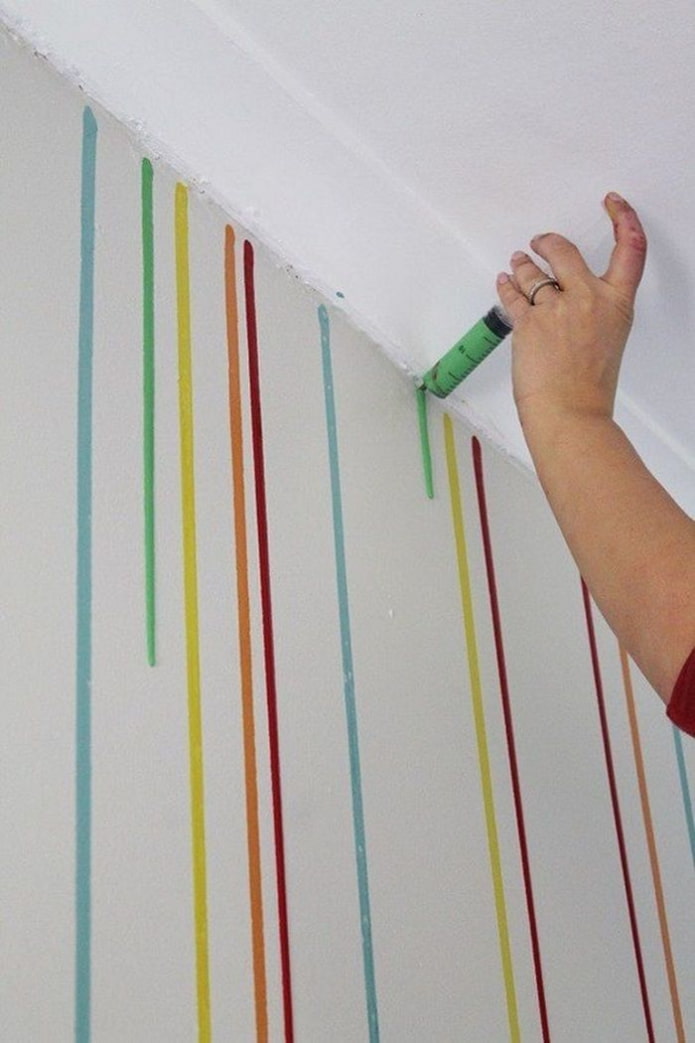
Paint is not only one of the most accessible and simple ways to decorate walls, it is also a fertile material for creative design. With the help of paint and a flight of imagination, you can make your interior unique in the world and delight your guests every time.
Now reading:
- Kitchen in a Khrushchev-era building with a gas water heater: 37 inspiring photos and ideas.
- Kitchen hood: 10 pros and cons for making the right choice.
- effective ways to insulate wooden windows with your own hands.
- Room zoning ideas using IKEA: 8 budget products.
- Hyundai i20: A Compact Car That Redefines Style and Performance